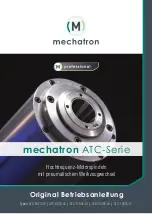
9
English
BASIC FUNCTIONS
1. Switch Operations and Temperature Adjustments
(Fig. 1, 2)
Press the switch upward or downward to enable
continual operations even when your
fi
nger is removed.
Press the protrusion lightly to return the switch to the
central position and turn o
ff
the power.
The wind temperature and wind volume can be adjusted
in two stages depending on which way the switch is set.
Switch [I] position:
110 V: 250°C (wind volume 0.25 m
3
)
120 V to 127 V: 350°C (wind volume 0.25 m
3
)
220 V to 240 V: 350°C (wind volume 0.25 m
3
)
Switch [II] position:
110 V to 127 V: 500°C (wind volume 0.5 m
3
)
220 V to 240 V: 600°C (wind volume 0.5 m
3
)
Press the quick cooling button and press the switch to
blow warm air at approximately 50 degrees Celsius for
each of the switch’s wind volumes.
This is used to quickly cool material that is heat-
warping and to cool the nozzle when it reaches high
temperatures after using the tool.
2. Using the Hook (Fig. 3)
CAUTION
○
When pointing the tool upward to work, make sure that
it is placed on a stable block that does not tilt.
○
Do not hang the tool from your wrist or waist when
moving around with the nozzle still hot.
Support the tool
fi
rmly when pointing the heat-wind release
nozzle upward.
Also, it is possible to suspend the tool from a wrist, etc.,
with a cord to prevent it from being dropped when working
in high locations, etc.
3. Attaching the Nozzle (Fig. 4)
CAUTION
The nozzle is extremely hot immediately after use, so
do not touch it.
NOTE
Make sure you do not drop the nozzle.
Replace the nozzle for a type that is suited to the job in hand.
Insert the nozzle supplied
fi
rmly into the hot wind release
nozzle until it can go no further.
4. Temperature Settings
WARNING
○
Do not use the tool in the vicinity of volatile substances
(thinner, gasoline, etc.)
○
Do not bring the hot wind release nozzle in close
contact with your hands or face during use.
The nozzle is extremely hot immediately after use, so
do not touch it.
Set the temperature in consideration of the article to be
heated.
Also, pay attention to the surrounding material that will be
heated at the same time.
First of all, apply the hot wind from a distance while checking
that there are no changes in the article being heated, and
then move it closer until it reaches an appropriate distance.
Heating in
fl
ammable substances
(paper, wood, plastic, etc.)
Set the switch to the [I] position and apply the heat with
the nozzle at least 10cm away from the article being
heated.
Gently move the tip of the nozzle up, down, left and right
to apply the heat.
Applying heat constantly to one location may result in
malformation or the outbreak of smoke.
Heating non-
fl
ammable substances
(metal, stone, concrete, etc.)
Set the switch to the [I] position, and if there are no
problems, move it to the [II] position.
Apply the heat with the nozzle at least 5cm away from
the article being heated.
Holding the nozzle too close may result in the tool
overheating, leading to malfunctions.
WORK EXAMPLE
CAUTION
Parts of the nozzles supplied are sharp, so use gloves
when removing them from the case and when attaching
or detaching them.
Select the nozzle in consideration of the shape of the
article being heated and the area being heated.
1. Peeling o
ff
paint (Fig. 5)
Use nozzle (
fl
at) or nozzle (round) to soften the paint
with the hot wind, and then remove it with the scraper
supplied.
Note that heating the paint too much may result in it
scorching and becoming harder, making it di
ffi
cult to
scrape o
ff
.
2. Softening adhesive (Fig. 6)
Use nozzle (
fl
at) or nozzle (round) to soften the surface
and make it easy to peel, and then pull up one of the
edges, blow heat underneath it and gently peel it o
ff
so
that none of the adhesive remains.
3. Heat wrapping (Fig. 7)
Use nozzle (
fl
at) to heat-wrap shrink
fi
lm and tubes. The
material will change color or crack if hot air is blown onto
it from a close distance, so maintain an appropriate
distance while monitoring progress.
4. Forming resin pipes (Fig. 8)
Use nozzle (curved surface) to evenly heat the
circumference of the resin pipe.
To prevent the inside of the pipe from narrowing when
bending it, etc., pour sand inside, block both ends and
then gently bend it.
5. Removing putty from window frames (Fig. 9)
Use nozzle (glass protector) to soften the putty with
heat, and then remove the putty with the scraper
supplied.
Note that glass may crack if heat is continually applied
to it.
6. Defrosting water pipes (Fig. 10)
Use nozzle (curved surface) to heat the frozen area
from the edge to the center. Do not mistake water pipes
for glass pipes.
Take care to avoid damaging frozen resin areas on
water pipes.
[E
ff
ectively Using the Quick Cooling Button]
Press the quick cooling button and press the switch to
blow warm air at approximately 50 degrees Celsius for
each of the switch’s wind volumes.
This is used to quickly cool material that is heat-
warping and to cool the nozzle when it reaches high
temperatures after using the Heat Gun.
00Book̲RH600T̲EE.indb 9
00Book̲RH600T̲EE.indb 9
2019/07/29 14:33:25
2019/07/29 14:33:25
Автотовары
«130»
130.com.ua











































